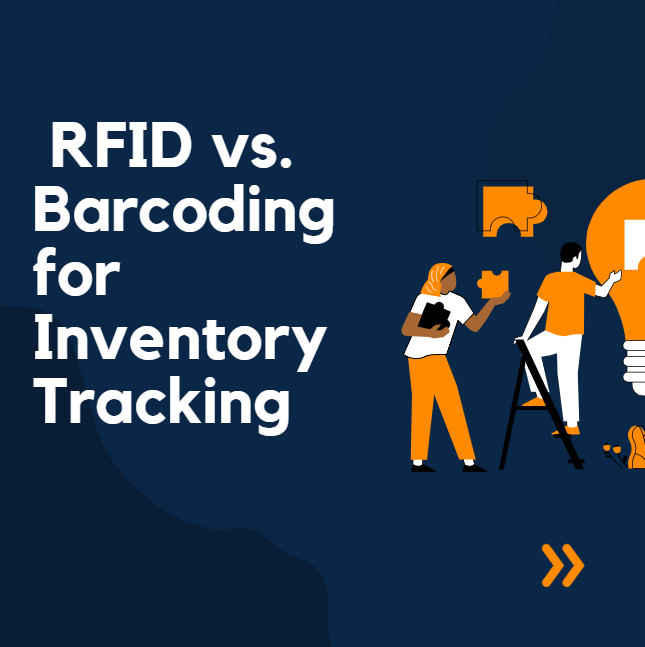RFID vs. Barcoding: Choosing the Right Inventory Tracking Solution for Warehouse Inventory Management
Introduction
In the fast-paced world of warehouse inventory management, choosing the right tracking solution is paramount to streamline operations and enhance efficiency. Two popular contenders in this arena are Radio Frequency Identification (RFID) and Barcoding systems. In this article, we’ll delve into the strengths and weaknesses of both technologies to help you make an informed decision for your warehouse inventory management needs.
Understanding RFID Technology
RFID, short for Radio Frequency Identification, is a cutting-edge technology that uses electromagnetic fields to automatically identify and track tags attached to objects. These tags contain electronically stored information, making it possible to retrieve data from a distance without requiring a direct line of sight.
Advantages of RFID in Warehouse Inventory Management
-
Real-time Tracking: RFID technology allows for real-time tracking of inventory items, providing instant updates on their location and status within the warehouse.
-
Increased Efficiency: Unlike barcodes, which require manual scanning, RFID readers can capture data from multiple tags simultaneously, significantly speeding up the inventory tracking process.
-
Reduced Human Error: With RFID, the chances of human error in data entry and scanning are minimized, leading to more accurate inventory records.
-
Improved Visibility: RFID provides comprehensive visibility into the movement of items throughout the warehouse, enabling better control over stock levels and preventing stockouts or overstocking.
-
Enhanced Security: RFID tags can be encrypted, providing an added layer of security to protect against theft and unauthorized access.
Drawbacks of RFID in Warehouse Inventory Management
-
Higher Initial Investment: Implementing an RFID system typically involves a higher upfront cost compared to barcoding, which may be a consideration for smaller businesses with budget constraints.
-
Compatibility with Existing Systems: Integrating RFID with existing inventory management software and systems may require additional investment and time.
Understanding Barcoding Technology
Barcoding is a well-established technology that uses a series of parallel lines and spaces of varying widths to represent data. Each unique combination of lines and spaces corresponds to a specific item or product.
Advantages of Barcoding in Warehouse Inventory Management
-
Cost-Effectiveness: Barcoding systems are generally more cost-effective to implement compared to RFID, making them a practical choice for budget-conscious businesses.
-
Ease of Implementation: Barcoding is easy to set up and can be quickly integrated with existing inventory management systems and software.
-
Familiarity: Barcodes have been in use for decades, and many businesses are already familiar with the technology, minimizing the learning curve for employees.
-
Wide Compatibility: Barcodes can be scanned using a variety of devices, including smartphones, tablets, and dedicated barcode scanners, providing flexibility in choosing hardware.
-
Reliability: Barcodes are highly reliable, and the technology has a proven track record in inventory management.
Drawbacks of Barcoding in Warehouse Inventory Management
-
Line-of-Sight Scanning: Unlike RFID, barcodes require a direct line of sight between the scanner and the barcode. This can lead to slower scanning times and potential inaccuracies.
-
Limited Data Capacity: Barcodes have a limited data capacity compared to RFID tags, which can store more extensive information.
Choosing the Right Solution for Your Warehouse Inventory Management
The decision between RFID and barcoding ultimately depends on the specific needs and constraints of your warehouse. If real-time tracking, enhanced efficiency, and reduced human error are critical factors, RFID may be the optimal choice despite the higher initial investment.
On the other hand, if cost-effectiveness and ease of implementation are primary concerns, barcoding may be the more practical solution for your warehouse inventory management needs.
Conclusion
In the dynamic world of warehouse inventory management, selecting the right tracking solution is pivotal for success. RFID and barcoding offer distinct advantages and drawbacks, and understanding their capabilities is essential for making an informed decision. Whether you opt for the cutting-edge technology of RFID or the established reliability of barcoding, your choice will undoubtedly contribute to the seamless operation of your warehouse.
















